It’s a rarely-talked-about adage in business that deserves more attention: procurement pays! Time and again, statistics show a strong correlation between a well-defined procurement process and healthy corporate performance. Regardless of industry, strong procurement functions result in higher revenues and reduced procurement process costs. Which is why it’s important to ensure your procurement function is optimized and can be taking advantage of the latest technologies.
In a recent webinar that I co-presented with Erin Hughes, Senior Director at SAP, we spent time familiarizing our audience with what we consider to be the next-generation procure-to-pay technologies and why now is the optimum time to invest in these tools. We like to say we are ‘reimagining’ the procure-to-pay process, data driven and fact-based approach for quantifiable proven business results.
When we talk about reimagining processes, we are likely to immediately shift our focus into a conversation around digital transformation and indeed, that was a major topic of our session. The term “digital transformation” is tossed around a good bit these days, but we firmly believe process intelligence and automating as many manual processes as possible is an important investment of digital transformation for any organization. A full reimagining of processes will require driving automation and process efficiency into the procurement function. Yet the statistics show companies are slow to embrace the transformation.

We polled our webinar audience, asking “are you currently implementing digital transformation in your procure-to-pay processes?” They responded:
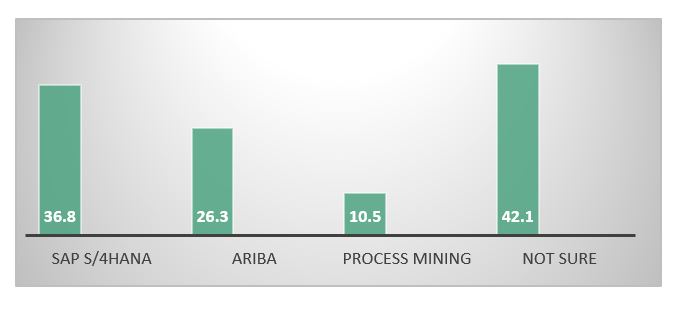
While these numbers did not surprise us, it was a bit troubling to realize that well over a third of our audience were not sure what their organization was doing to transform its procurement processes.
Reimagining procure-to-pay isn’t difficult, but it does require a strategic approach. We have found that focusing on these six capabilities help ensure procurement excellence and drive incremental value through advanced next-generation practices. Knowing your audience, while developing and communicating a clear understanding of where the organization is headed, is an important first step. The remaining capabilities focus on achieving and maintaining the inner core and outer core functions. At a minimum, your digital transformation must focus on inner core, strengthening procurement functions with a goal to provide superior customer service by optimizing the process costs and driving bottom line growth.
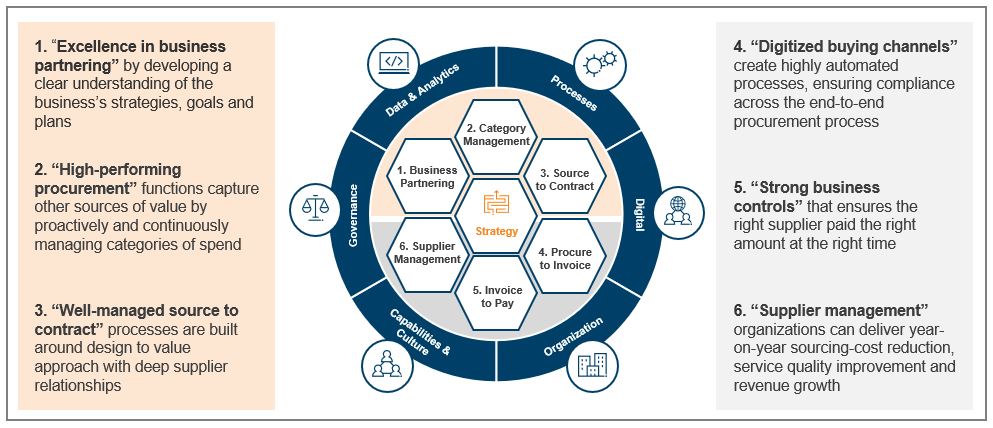
Procurement reimagination as simple as it sounds, it involves complex organizational change management making adoption difficult for business if not planned carefully. One of the proven methods for successful adoption of large-scale transformation projects is to leverage the data to drive from fact-based decision-making process while designing the new processes. This can be accomplished in many ways, such as using business intelligence, analytics, advanced visualization, etc., however, the recent path-breaking technology enablement in process mining making it a compelling case for using such technology for process reimagination. Process mining is a computing technique that will leverage event data in your existing systems to construct a process and provide real-time visibility into process efficiencies, bottlenecks, and opportunities for improvement.
Reimagining Procure-to-Pay with Process Analytics
Of course, the real foundation to success in any reimaginging is the data and how well the organization understands and uses the data to achieve the process improvements. We often recommend a Business Value Driven approach, which centers on driving continuous evolution for process improvement. Add to that management support, provided by advanced visualization and real-time information, for effective decision making with deep process insights. To achieve that, we suggest establishing five performance dimensions: cost, agility, responsiveness, reliability and efficiency. This chart details what each represents and how each facet of the procurement process fits into the measurement framework.
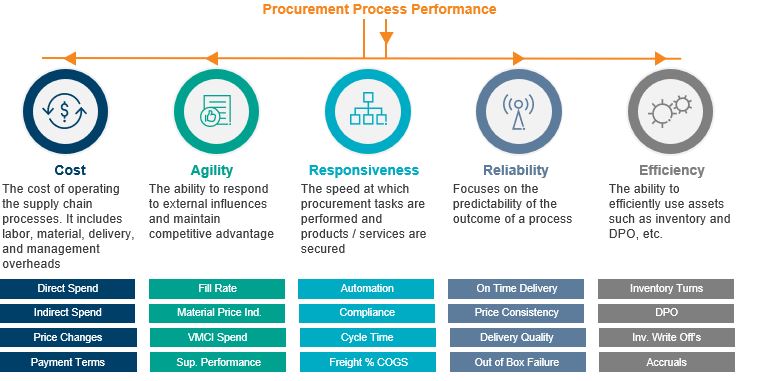
During the webinar (and we use this same process when we begin working with new clients), we reviewed the six capabilities and how process mining, using a solution like Celonis, would help an organization improve its procurement efficiencies. Category management, for example. Significant procurement spend occurs outside of establish contract terms and procurement policies, which results in inconsistent supplier data, contract compliance and makes it difficult to plan and forecast spend. Sound familiar?
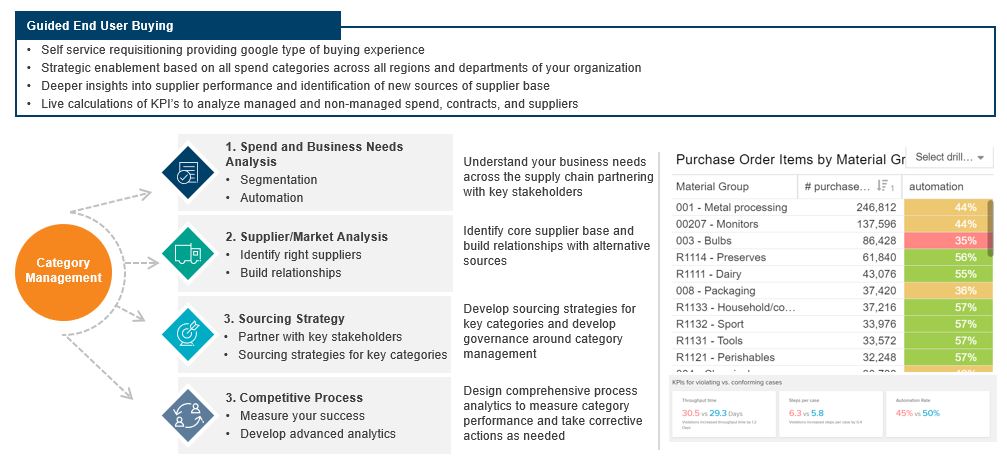
Introducing Process Mining
Process mining, which is a technique that supports the analysis of business processes based on the event logs in the transaction process systems, is also a fact-based, data-driven approach that many organizations are beginning to find essential to complete their digital transformations. Process mining was mentioned as a “top 10 disruptive technology trend” by Gartner, along with other technologies such as AI, blockchain and quantum computing. Its key capabilities include:
- Automated discovery of process models, exceptions, and deviations with frequency and statistics
- Understanding of different perspectives on operations, not just a process perspective
- Monitoring of key performance indicators using dashboards in real time
- Compliance verification capabilities and gap analysis
- Standardization of business processes & improvement of operational excellence
This is an example of a current client’s purchase-to-pay automation. The goal would be to get automation to the 75-80 percent range, and this client is working towards that goal.
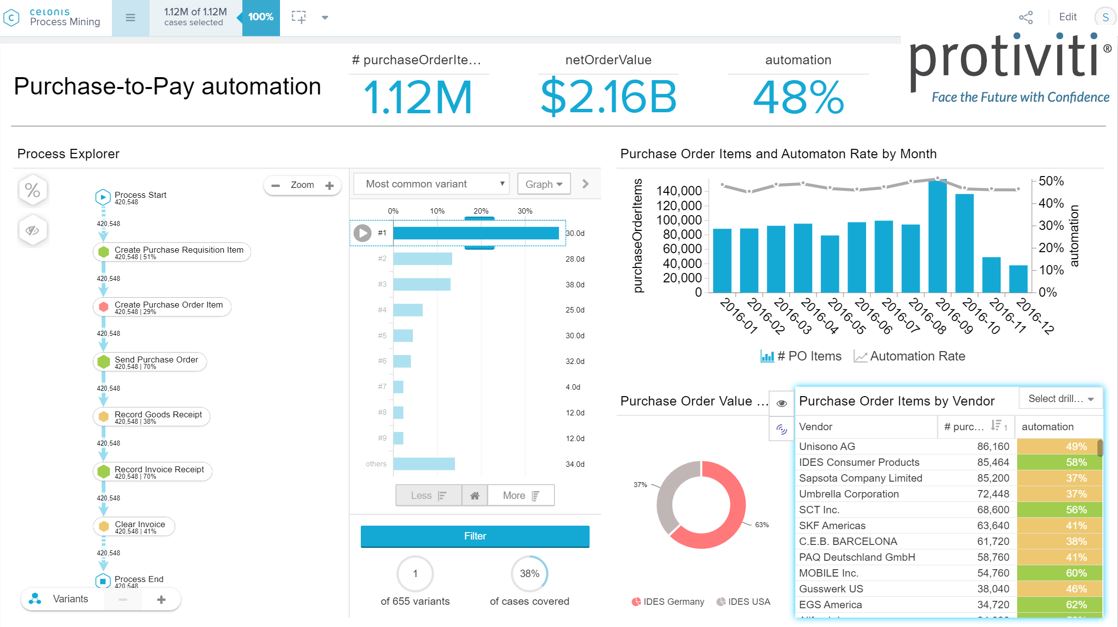
The Procure-to-Pay Reimagining Journey
We’ve barely scratched the surface of the opportunities digital transformation and a reimagined approach to procurement can bring to an organization. Is there a “right” sequence to pursue in digital transformation? That’s difficult to say, as every organization has its own requirements. As a thought starter, I’ve summed up most important factors in getting started in this four-step roadmap:
- Align strategic objectives to transformation objectives. It is imperative for every business to generate new revenue models using digital transformation. Understand your strategic objectives and digital transformation opportunities.
- Understand and baseline processes. Establish process mining capabilities within your organization to understand process bottlenecks. Work with your business to remove those hurdles for digital transformation.
- Develop a process mining center of excellence in your organization establishing multiple use cases in the areas of digital transformation, business performance improvement, audit, and compliance
- Redefine processes and continue to improve using data driven, fact-based approach in the areas of supplier collaboration, category management, and process automation
To watch the entire Next-Generation Procure-to-Pay webinar replay, click here.



